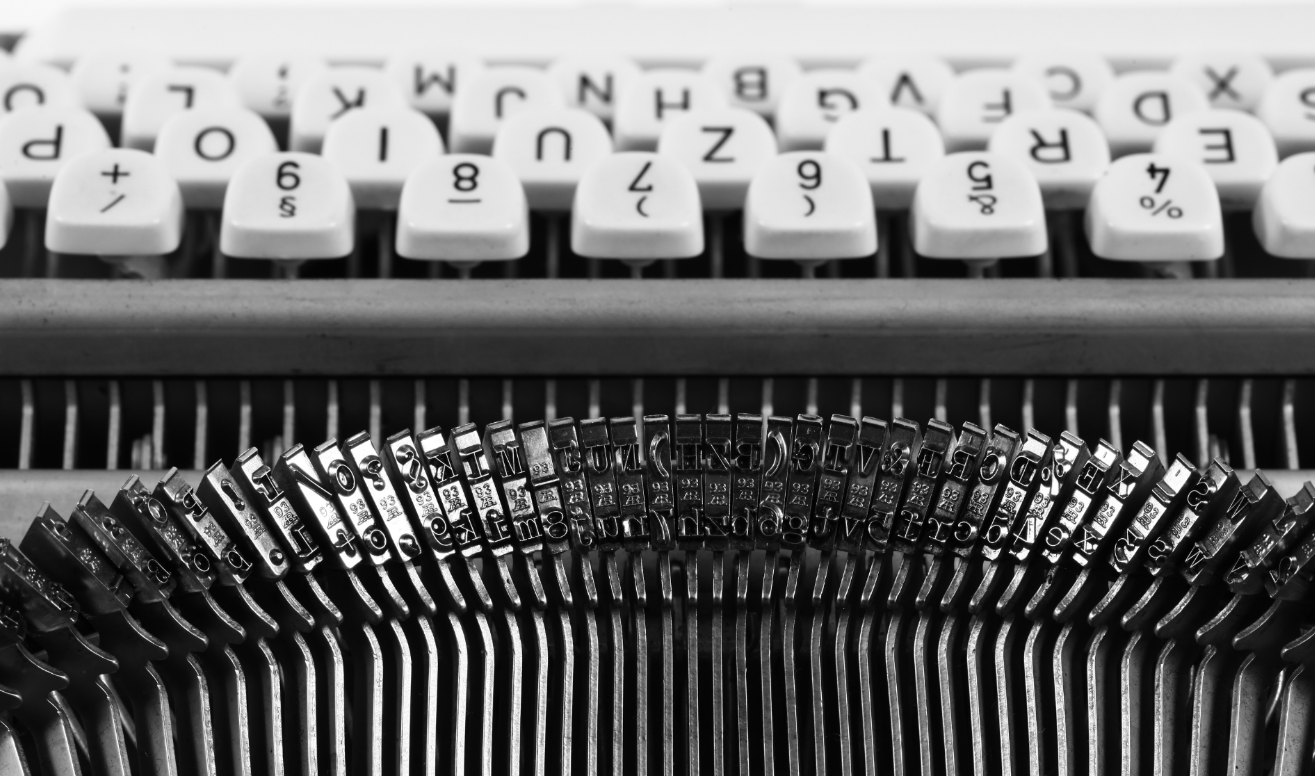As we continue with our 30 years of Fiona Shipley Transcription series, we talk to Fiona about FSTL. She tells us her thoughts on the business, what’s changed since she founded FSTL in 1990 and where she believes the world of transcription is headed.
Q: Tell us what transcription was like?
Fiona: When I started transcribing over 37 years ago, things were very different! We worked on manual typewriters, typing straight on to paper, possibly with carbon copies. Tippex (for those of you that remember the white solution – for those who don’t, click here!) could be used, but generally it meant that if any mistakes were made, the whole page had to be typed again.
Tapes were then posted to the transcribers. With no internet to look up terminology one had to turn to newspapers and libraries to check anything and everything. Hard copy transcripts were then posted back to the office.
When it came to doing team jobs, we hired in the requisite number of typewriters. The transcripts were never particularly neat as one turn could finish halfway down the page, and the following one start on a new one!
There was even a formula to centre headings which involved, from memory, counting the number of words, subtracting these from the spaces between the margins and dividing by two, and counting the result!
I saw real progress being made when electronic typewriters came in. For me this was the biggest change, as having used a firm touch on the manual ones, a very light touch was now required and the keys consequently moved much more quickly!
Technology moved rapidly after that. The introduction of fax machines meant that urgent jobs could be sent more quickly, and then we saw computers begin to come in – although only a few transcribers had these. There were a number of formats too, i.e. WordPerfect, and then WordStar, and disks had to be converted, generally by taking them to the nearest shop that could convert them for a fee. Both the discs and the tapes still had to be posted though.
Q: And how are things now in the 21st century world of transcription?
Fiona: Now we all have computers and speed is the overriding benefit. Editing or correcting takes place in a matter of seconds, a huge number of different displays and fonts can be used to merge documents or set things out in a clear format, and nearly every term or name can be checked on the web – again in a matter of seconds. The complete transcripts are emailed, reaching their destination much more quickly.
Q: What does the future hold for transcription?
Fiona: Artificial intelligence is on the horizon and coming ever closer. I think there are definitely some jobs where voice recognition can be used, e.g. one speaker clearly in front of a microphone. But our jobs involve multiple speakers, different nationalities and accents, and not always the clearest of recordings, so whether or not transcribers can be replaced by robots remains to be seen!
Q: After 30 years of FSTL, in your experience, what makes a good transcriber?
Fiona: A good transcriber needs fast and accurate typing speeds, good knowledge of English grammar, the ability to transcribe intelligently so that the words make sense, a good general knowledge, and again, the ability and interest to check things that are readily available on the web. Also they need to have discipline to work alone from home and meet our deadlines which can be very tight.
Q: And what about a good client?!
Fiona: A good client needs to understand the reason why we ask for a good recording, with all the back-up materials. The result is an accurate transcript that is delivered in a timely fashion. A bad recording takes a very long time to do, and accuracy cannot be guaranteed.
Q: What are the best and worst aspects of the business for you?
Fiona: Best aspects: interesting subjects, good recordings and informative slides.
Worst aspects: Bad recordings and tight deadlines!

